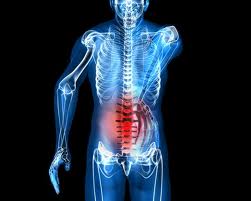Sometimes the only relief for a patient who presents with chronic and recalcitrant pain comes from a course of spinal cord stimulation.
“I consider spinal cord stimulation a real home run,” Dr. Allan L. Brook said at the annual meeting of the Society of Neurointerventional Surgery. “You can really help patients who have no other method of pain relief.”
Spinal cord stimulation is a form of neuromodulation that masks the pain signals by delivering pulses of electricity via an electrode directly to the spinal cord, leading to parasthesias along the desired path. The procedure has Food and Drug Administration clearance for treating neuropathic, intractable pain in the extremities and trunk.
In describing its proposed mechanism of action, Dr. Brook, director of neurointerventional neuroradiology at Montefiore Medical Center in the Bronx, N.Y., said that the noxious afferent stimulus is masked by nonnoxious sensations produced by stimulation. This results in a conductance blockade of the spinothalamic sensory system, which in turn activates supraspinal pain-relieving centers. Stimulation also causes blockage of supraspinal or segmental autonomic nervous systems, and alters the way neurotransmitters are released.
“I consider spinal cord stimulation a real home run.”
The most common indication for spinal cord stimulation is failed back surgery syndromes. “There are many fusion surgeries out there with poor results,” said Dr. Brook, who is also professor of clinical radiology and neurosurgery at Albert Einstein College of Medicine, New York. “Causes may include arachnoiditis, recurrent or residual disk herniation, epidural fibrosis, and radiculopathy from any cause.”
Other indications include complex regional pain syndrome type I, CRPS type II, ischemic limb pain, refractory angina, peripheral neuropathy, abdominal pain, brachial plexus/cervical pain, interstitial cystitis, phantom limb pain, postherpetic neuralgia, headache/facial pain, and chronic pain that fails medical therapy.
Contraindications for spinal cord stimulation include patients with an infection, those in whom standard pain therapy works, those with coagulation issues, those who are mentally incompetent, and those who lack health insurance, as each device costs about $20,000. Psychological exclusion criteria include patients with active psychosis or those who are suicidal, and those with major depression, mood problems, or substance abuse problems. “Insurance companies require a psychological evaluation for this procedure,” Dr. Brook said.
Orientation of the pain drives placement of the stimulator’s lead tip. For example, the lead tip is positioned on C2-C5 for pain in the upper extremity, on T11-L1 for foot pain, on T9-T10 for lower extremity pain, on T8-T10 for low back pain, on T1-T2 for chest pain, on C1-C2 for occipital neuralgia, and on S2-S4 for pelvic pain.
The least invasive initial approach is to temporarily position the spinal cord stimulator for several days so that the proximal lead portion is secured to skin. If the pain relief exceeds 50% during this trial period, then a permanent spine stimulator can be placed surgically.
The main drawback to permanent placement is that patients can’t undergo an MRI, but Dr. Brook said that an MRI-compatible device is currently being developed. Complications can rarely occur, including nerve injury, epidural hematoma, wound infection, and lead migration. “All of these can be prevented with good techniques,” he said.
Researchers who conducted a 20-year retrospective review of 51 studies of spinal cord stimulation concluded that the procedure had a positive effect on chronic low back pain, severe limb ischemia, refractory angina, and peripheral neuropathy (J. Neurosurg. 2004;100:254-67).
A randomized, prospective, controlled trial of spinal cord stimulation in patients who had reflex sympathetic dystrophy (now called CRPS type I) for at least 6 months found a significant benefit of decreased pain and improved function, with a P value less than .001 (N. Engl. J. Med. 2000;343:618-24).
Another trial found that neurostimulation for failed back surgery syndrome resulted in a cost savings after 2.5 years, compared with conventional medical management (Neurosurgery 2002;51:106-16).
“This is a reversible, minimally invasive procedure,” Dr. Brook said of spinal cord stimulation. “It’s nondestructive, compared with neuroablation; it reduces the abuse of narcotics; and it can improve a patient’s ability to perform activities of daily living.”
Dr. Brook said that he had no relevant financial conflicts to disclose.


0 Comments